What Wedges Do the Pros Use? Top 100 PGA Tour Player Analysis (2023 update)

The march of golf technology has led to ever increasing numbers of specialist and highly customized clubs and when it comes to golf wedges especially that trend has been very clear.
Long gone are the days of golfers simply choosing a standard pitching and sand wedge and in its place have come wedges with seemingly infinite different loft, grind, bounce, and finish options.
The pros are always at the forefront of the latest and best wedges so to see what we can learn from the best players we have taken an in-depth look at the wedge setups of the top 100 players on the PGA Tour.
Titleist wedges are the most used by the top 100 PGA Tour pros with 59 playing at least one of their models. PING wedges are used by 14 pros with Callaway and Cleveland wedges chosen by 13 and 12 respectively. 88% of this group use 4 wedges including a pitching, gap, sand, and lob wedge of varying lofts from 46º to 64º.
That breakdown only gives us part of the picture however when it comes to the wedges being used by the pros and after examining the wedges chosen by the best players on the PGA Tour in detail it is fascinating to see the choices and the trends that emerge such as the rise of the specialist pitching wedge.
Also not only have we analyzed how many and what degree of wedges they carry but we’ve also checked out what bounce and grind of wedges they are using as well as looking at what has changed since we last time we did this in-depth study of the most popular wedges on Tour a couple of years back.

Most Popular Wedges on Tour? Vokey is Titleist’s Leader
When it comes to the wedge brands used by the best pros there is one clear winner.
Of the 387 different wedges used by the best players on the PGA Tour made by 12 different manufacturers 46% are produced by Titleist with the next most played brand being PING whose wedges account for only 14% of the wedges used by comparison.
Callaway wedges make up 12% of the wedges played with Cleveland’s models making up 10%.
Titleist Vokey’s SM9 is the most used wedge by the top 100 PGA Tour pros with 42 using at least one. It accounts for over 1/4 of all the wedges used by this group. Cleveland’s RTX Zipcore wedge is the next most popular including with Shane Lowry. PING’s Glide 4.0 & Callaway’s Jaws Raw models are those brands most used.
When we did this same in-depth study two years ago Titleist wedges accounted for 44% of all the wedges chosen by this elite group so it appears their dominance is only growing as time passes.
The most popular model back then was the Vokey SM8 and as such all that seems to have changed is that the large bunch of pros using them have simply upgraded to the SM9 version.
Such dominance by Titleist makes it far and away the wedge brand of choice for the best pros on Tour but when looking in detail at their wedges it doesn’t take long to see they have a huge number of unique preferences whether that be with respect to the bounce, loft, grind or finish of the wedges they chose.
We found 71 different wedge models in total being used by this group across all the different wedge types – pitching, gap, sand, and lob wedges – with a number of the wedges being listed as ‘prototypes’ or even having a specific grind attributed to a particular player.
It won’t surprise many to know also for example that Taylor Made’s Milled Grind 3 wedges are available with Tiger Woods’ chosen grind.
Every player is clearly different therefore and although different golfers may have the same model of wedge it is never one size fits all and many of the pros have their own unique requirements when it comes to bounce, grind, loft, and finish on that model.
| BRAND OF WEDGES | % OF ALL WEDGES USED BY TOP 100 PGA TOUR PROS | MOST USED WEDGE MODEL |
| Titleist Vokey | 46% (inc. Patrick Cantlay, Matt Fitzpatrick, Justin Thomas, Cameron Young, Max Homa, Jordan Speith, Billy Horschel) | Titleist Vokey SM9 View at PGA Superstore Check eBay |
| PING | 14% (inc. Tony Finau, Viktor Hovland, Corey Conners, Sahith Theegala, Seamus Power) | PING Glide 4.0 View at PGA Superstore Check eBay |
| Srixon / Cleveland | 12% (inc. Shane Lowry, Keegan Bradley, Sepp Straka, Matt Kuchar, Taylor Pendrith, Brooks Koepka) | RTX Zipcore Tour Rack View at PGA Superstore Check eBay |
| Callaway | 12% (inc. Jon Rahm, Sam Burns, Adam Hadwin, Talor Gooch, Si Woo Kim, Alex Noren) | Jaws MD5 Check eBay Jaws Raw View at PGA Superstore View at Callaway Golf |
| TaylorMade | 7% (inc. Rory McIlroy, Collin Morikawa, Lucas Herbert) | Milled Grind 3 View at PGA Superstore Check eBay |
| PXG | 3% (Inc. Joel Dahmen) | 0311 Sugar Daddy II Milled Check eBay |
| Wilson | 2% (Inc. Trey Mullinax) | Staff Model View at PGA Superstore Check eBay |
| Mizuno | 1% (Inc. Keith Mitchell) | T22 View at PGA Superstore |
| Other brands | 3% |

How Many Wedges Do Pros Carry? Note the Specialists
The pros tend to tinker with their golf club set up a lot depending on where they are playing and the conditions they will be up against in any particular week.
But when we looked in detail at how many wedges the top 100 pros on the PGA Tour carry there were some clear indicators in terms of what they consider to be the best wedge set up.
88% of the top 100 PGA Tour pros carry 4 wedges including Rory McIlroy and Jordan Speith. The other 12% carry 3. The most common wedge set up, chosen by 50%, is a pitching wedge that matches their irons & 3 specialist wedges – a gap wedge ranging from 49º to 53º, a sand wedge from 53º to 59º and a lob wedge from 58º to 64º.
Players such as Phil Mickelson have been known in the past to occasionally carry a 5th wedge to give them more options for shots inside 125 yards, but that is a rare occurrence.
Indeed it is interesting to note that his great rival Tiger Woods carries only 3 wedges – a TaylorMade P7TW pitching wedge and a 56º sand wedge and a 60º lob wedge both of which are TaylorMade’s MG3 Raw TW Grind model.
The increasing trend we noticed when we did this study a couple of years ago is for the top pros to choose a specialty pitching wedge in place of a standard wedge which comes as part of their iron set and this group now stands at 36 strong across the top 100 compared to 28 two years back.
Justin Thomas, Jordan Speith, and Cameron Young are just a selection of some of the top 100 who are opting for the specialty wedge approach across all their wedges.
The arguments for doing this are that the narrower and deeper milled grooves give a more penetrating ball flight and more consistent spin while the increased grind and bounce options allow for increased shot creativity.
Commentators note that this trend is appearing across the younger generation of PGA Tour stars with the older guard sticking with their iron set matching pitching wedge but that also seems to be changing with Rory McIlroy for example now joining the four specialist wedge camp including a 46º MG3 wedge.
Irrespective of age however the trend of using specialty wedges exclusively is one we clearly saw again in our analysis with other notable names such as Hideki Matsuyama and Max Homa also following it.

Within the clear minority – 12% of the top 100 – opting to put only 3 wedges in their bag there are obviously some of the world’s best players, such as Shane Lowry, Adam Scott as well as the great Tiger Woods, in that group.
But these golfers are definitely among the few in terms of choosing that wedge set up on Tour.
It was interesting to note however that it tended to be the traditional 56º sand wedge that was the club that made way with those players using only 3 wedges typically opting for a gap wedge from between 51 to 54 degrees combined with a very lofted 58º sand or 60º lob wedge.
Within another definite minority also was Sam Burns who was in a group of only two in the top 100, alongside Maverick McNealy, using a non-specialist gap wedge – his Callaway Apex TCB ‘Approach’ wedge – that matched his iron set in addition to a pitching wedge.
Given Burns has been sitting comfortably in the top 20 on Tour for a couple of years now clearly shows however that there is more than one way to go about choosing your wedges and you don’t need a bag full of specialty wedges to be successful.
[Editor’s note – For our purposes we class a ‘specialty wedge’ as a wedge that isn’t sold as part of an iron set. Examples include Titleist’s Vokey range, PING’s Glide, Callaway’s Jaws, & Cleveland’s RTX wedges.]

What Degree Wedges Do the Pros Use on the PGA Tour?
I don’t know about you but one of the main things that strikes me when I watch the pros on TV these days is the ridiculous distances they seem to hit all their irons and especially their wedges.
Sitting about 150 yards out from the green it always amazes me that while I would be thinking 7-iron most likely players like Rory McIlroy we are told by the commentators are reaching for their pitching wedge.
We take a close look at how far the pros hit each club in another one of our articles here, and while they undoubtedly hit the ball a mile, on closer inspection of their wedges the disparity between us and them often becomes a bit clearer.
“What happened was years ago they always said a sand wedge was at 56 degrees, [then] all of a sudden along come irons that keep people for some reason [recognizing] distance so the manufacturers start strengthening all their irons. The next thing you know pitching wedges are all the way down to 43 degrees.”
Bob Vokey, one of the world’s foremost wedge designers
For example, Brendan Todd’s ‘gap wedge’ has a degree loft of 49 degrees which is almost the same as my pitching wedge.
While I’m not saying for a minute that the differences in the iron lofts used by the pros explain why they hit the same club so much further than me it is important to bear in mind the degrees of wedges they are using if you are looking at the wedge models they use on Tour.
67% of the top 100 PGA Tour pros use a 46º pitching wedge with just over 10% each using a 47º and 48º model. For gap wedges 40% use 50º models with over 1/3 choosing a 52º loft. The most used sand wedge loft is 56º with nearly 1/2 of the top 100 picking that model while for lob wedges 64% of this group play with 60º models.
Looking at the degrees of wedges the pros use as a whole however doesn’t tell the whole story. One pro’s ‘sand’ wedge for example could be another player’s ‘lob wedge’.
CT Pan for example uses 4 wedges of lofts 46°, 52°, 59° and 64° while the degrees of the four wedges that Rory McIlroy chooses are 46 degrees, 50 degrees, 54 degrees, and 60 degrees.
So looking at a standard loft chart that classifies a ‘traditional’ sand wedge as 56° it would seem CT Pan doesn’t carry a sand wedge at all but instead uses 2 lob wedges given there’s only one degree of difference between his 59º wedge and McIlroy’s 60º lob wedge.
But Pan must use one of his four wedges out of the sand so which one is his ‘sand wedge’?
In reality it doesn’t matter of course and the point is simply that in the world of wedges today it is almost irrelevant what they are called.
The critical factor is that the various lofts of wedges any golfer carries cover a good degree of loft and therefore distances.
When it comes to the top 100 pros on the PGA Tour however they are far more precise than amateurs and can often go down to as much as a 1/4 of a degree when it comes to the shortest clubs in their bag to ensure their wedge distance gapping is as dialed in as possible.
Bob Vokey, one of the world’s foremost wedge designers, says he likes to see anywhere 4 to 6 degrees between the lofts of a golfer’s wedges which will equate to anywhere between 10 and 15 yards of distance for most male golfers.
Female and junior golfers will have 5 to 10-yard gaps by comparison.
A breakdown of the lofts of the lob wedges used by the top 100 PGA Tour golfers is given in the infographic below together with the brands of lob wedges they choose and you can see comparable information for the gap and sand wedges they play with in similar charts above.
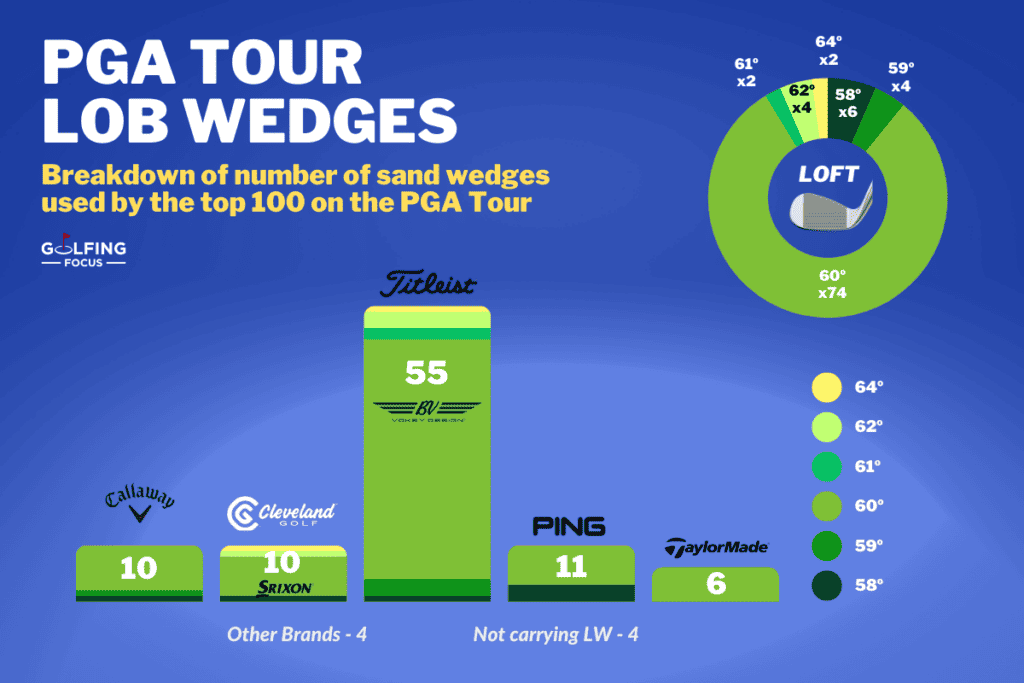
What Grind and Bounce Wedges Do Pros Use?
One of the features of the advance of golf tech in recent times when it comes to wedges is the seemingly exponential rise in the options that are available.
And two of the key factors in these options are ‘grind’ and ‘bounce’.
While ‘bounce’ is the angle created between the leading edge of a wedge and the lowest point of the sole or trailing edge, wedge ‘grind’ is the manipulation or removal of material from the sole of the club, helping to improve contact with the turf or sand.
Grinds, in brief, therefore allow for more creativity and consistency around the green – providing the correct contact on the face – giving you the confidence to fly the ball lower, with more spin.
So what are the pros doing when it comes to the bounce and grind of the wedges that they use?
‘10’ bounce pitching wedges are the most used by the top 100 PGA Tour pros with ‘F’ the most chosen grind option. 8, 10, and 12 bounce gap and sand wedges are the most popular with F the most common gap wedge grind option compared to S grind for sand wedges. 8 bounce and T grinds are the most popular in lob wedges.
It should be noted however that bounce and grind data was not available for all the wedges we found used by the best pros on the PGA Tour and also different brands use different categorizations for their grind options which makes direct comparisons more difficult.
What was clear though from our analysis this year, and a couple of years back, is that there is clearly a large variety of grind and bounce options used across the top 100 pros on the Tour and especially when it comes to lob wedges where we found 15 different grinds being used.

“Bounce if your friend because it provides forgiveness on all types of wedge shots.”
Bob Vokey, Master Craftsman and one of the world’s foremost wedge designers
The table below though gives a detailed breakdown of all the various bounce and grind wedges that we found through our research.
| WEDGE | BOUNCE OPTION | GRIND OPTION | NO. OF TOP 100 PGA TOUR PROS |
| Pitching wedge | 7 | No data | 1 |
| 8 | S | 2 | |
| 9 | SB (Standard) | 1 (Rory McIlroy) | |
| 10 | F | 20 (inc. Patrick Cantlay, Justin Thomas, Cameron Young, Max Homa, Jordan Speith) | |
| Mid | 4 (inc. Brooks Koepka) | ||
| S | 3 | ||
| 12 | S | 1 | |
| Gap wedge | 7 | No data | 1 |
| 8 | F | 15 (inc. Will Zalatoris, Patrick Cantlay, Jordan Speith) | |
| 9 | SB (Standard) | 7 (inc. Rory McIlroy, Collin Morikawa, Tommy Fleetwood) | |
| 10 | S | 9 (inc. Xander Schauffele, Kevin Kisner) | |
| Mid | 8 | ||
| No data | 5 | ||
| 12 | F | 19 (inc. Scottie Scheffler, Matt Fitzpatrick, Justin Thomas, Cameron Young, Max Homa, Billy Horschel) | |
| S (Standard) | 10 (inc. Viktor Hovland) | ||
| 13 | BP | 1 | |
| Sand wedge | 6 | K | 1 |
| 8 | C | 2 | |
| LB (Low Bounce) | 2 | ||
| M | 12 (inc. Patrick Cantlay, Matt Fitzpatrick, Cameron Young) | ||
| 10 | Mid | 3 (inc. Brooks Koepka) | |
| S | 18 (inc. Will Zalatoris, Xander Schauffele, Sam Burns, Jordan Speith, Adam Scott) | ||
| No data | 3 (inc. Jon Rahm) | ||
| 11 | SB (Standard) | 1 (Rory McIlroy) | |
| 12 | D | 2 | |
| Full | 3 | ||
| S (Standard) | 11 (inc. Viktor Hovland) | ||
| No data | 5 (inc Jon Rahm) | ||
| 14 | F | 8 (inc. Scottie Scheffler, Justin Thomas, Max Homa) | |
| Lob wedge | 4 | L | 7 (inc Max Homa) |
| 6 | K | 1 (Xander Schauffele) | |
| T | 4 | ||
| No data | 4 | ||
| 7 | No data | 1 (Justin Rose) | |
| 8 | C | 5 | |
| M | 7 (inc. Matt Fitzpatrick, Adam Scott) | ||
| No data | 3 | ||
| 9 | No data | 2 | |
| 10 | Full | 1 | |
| J | 1 | ||
| Mid | 5 | ||
| No data | 3 (inc. Jon Rahm) | ||
| 11 | TW | 1 | |
| 12 | S (Standard) | 1 | |
| X | 1 (Sam Burns) |
[Note – Just so you know, and we are upfront as an affiliate program participant, Golfing Focus, at no cost to you, earns from qualifying purchases made through links on this page.]
Before you go …
Ever wondered how far the pros hit their wedges compared to amateurs and how your own wedge distances stack up against other amateurs?
Read our next article to find out how far you should hit your wedges and the single best tip to hit your wedges those ‘inbetweener’ distances!
How Far Should You Hit Your Wedges? Be Sure to Fill the Gaps!
Other great articles related to this topic:
- What Clubs Do Pro Golfers Use? Top 100 PGA Tour Player Guide
- What Driver is Most Used On the PGA Tour? Top 100 Player Analysis
- The Fairway Woods Used by the Top 100 PGA Tour Pros
- What Hybrid Golf Clubs Do the Top 100 PGA Tour Pros Use?
- What Driving Irons Do the Pros Use on the PGA Tour?
- What Irons Do the Pros Use? Top 100 PGA Tour Player Guide
- What Putters Do the Pros Use? Top 100 PGA Tour Player Guide
- What Golf Balls Do the Pros Use? Top 100 PGA Tour Players Breakdown
- What Golf Grips Do the Pros Use? Top 100 PGA Tour Player Guide
- What Shafts Do Pros Use? Top 100 PGA Tour Player Breakdown
- Do Pros Use Regular or Stiff Shafts? They’re Stronger Than That!
- Do Pros Use Graphite or Steel Shafts? It Depends Which Club
- Do Golf Pros Wear Metal Spikes? But They are Banned!
- Most Popular Driver on LPGA Tour? Top 50 Player Guide
- What Irons Do LPGA Players Use? Top 50 Pros Analysis
- What Golf Balls Do LPGA Players Use? Top 50 Player Breakdown
- What Drives the Senior Tour Pros? Most Popular Driver on Champions Tour
- From Tee to Green: Analyzing What Golf Balls Champions Tour Pros Use
RECENT ARTICLES
LEGAL INFORMATION
This site is owned and operated by Golfing Focus Limited, a private limited company whose registered office is in London, UK. Golfing Focus Limited is a participant in the Amazon Services LLC Associates Program, an affiliate advertising program designed to provide a means for sites to earn advertising fees (at no cost to you) by linking to Amazon.com. Golfing Focus Limited also participates in other affiliate programs with the eBay Partner Network, FlexOffers, CJ.com, Svorn and other sites and is compensated for referring traffic and business to these companies (again at no cost to you).
Our Socials

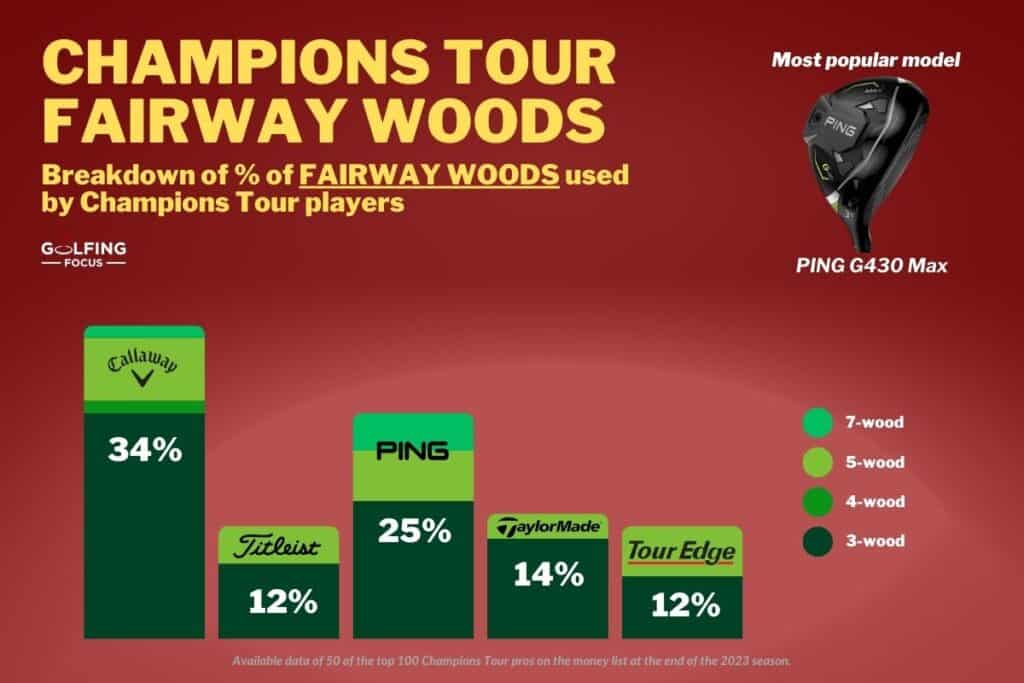
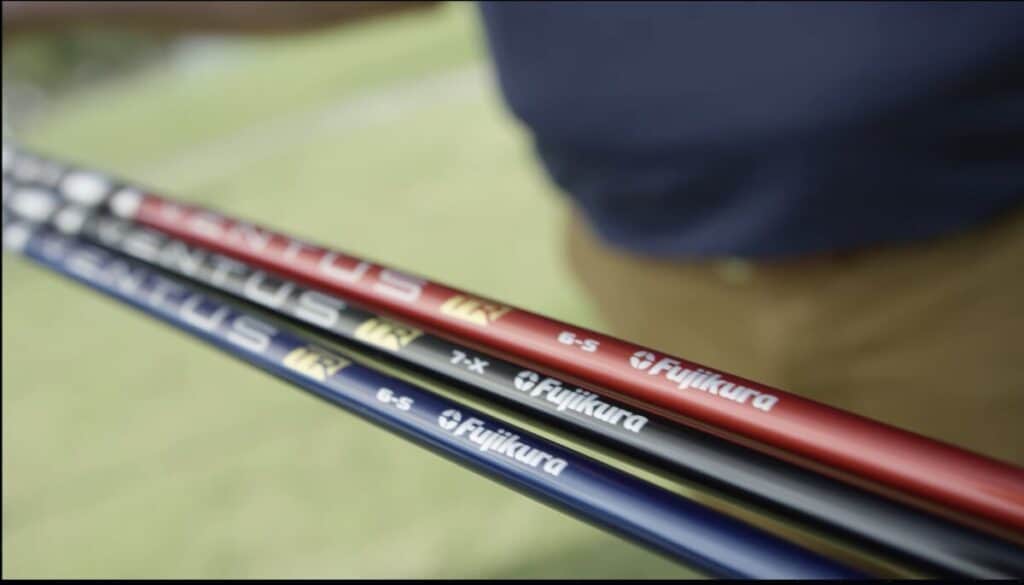
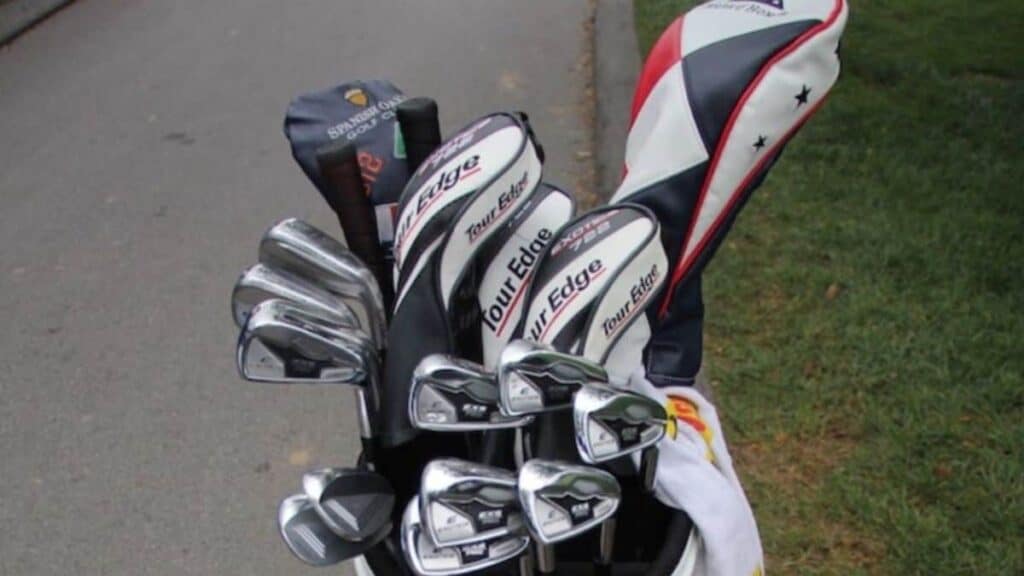
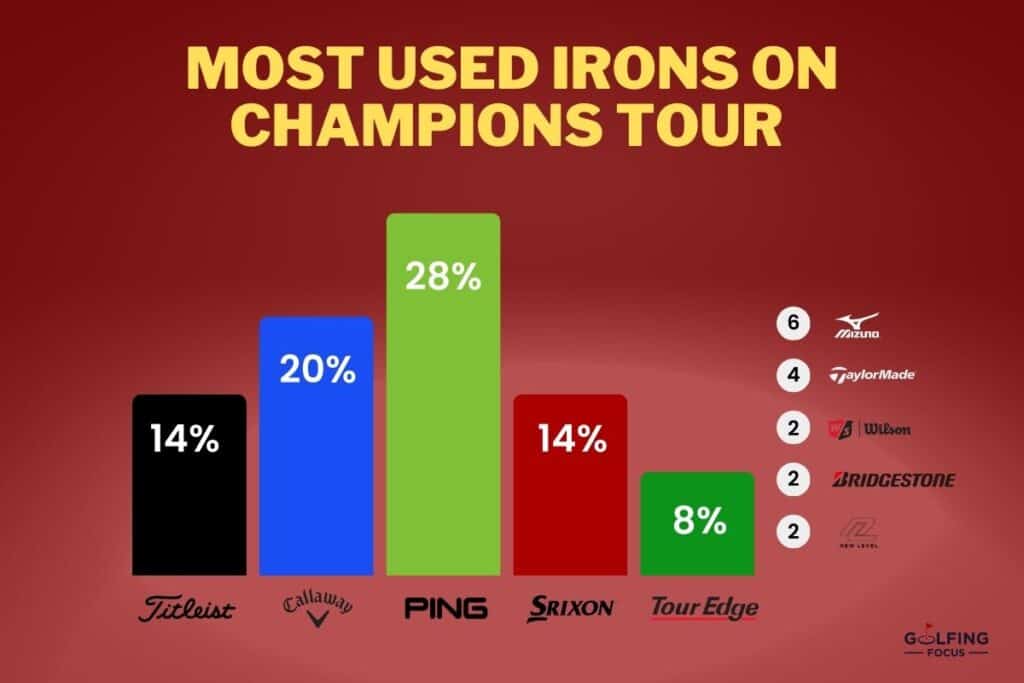

Leave a Reply